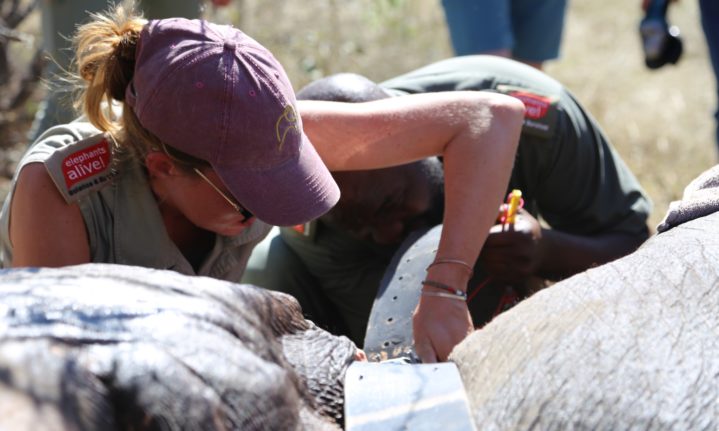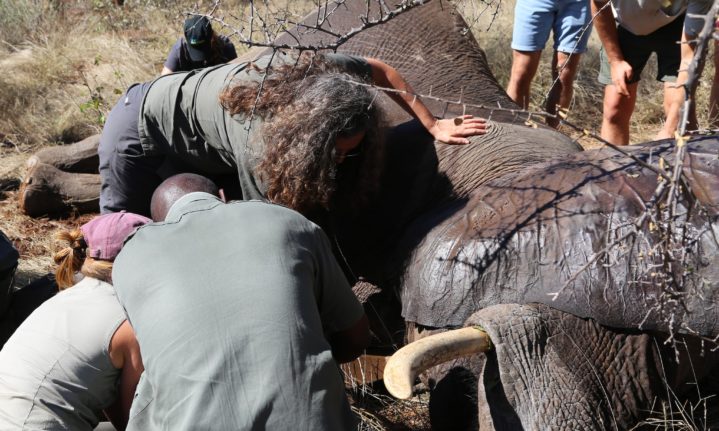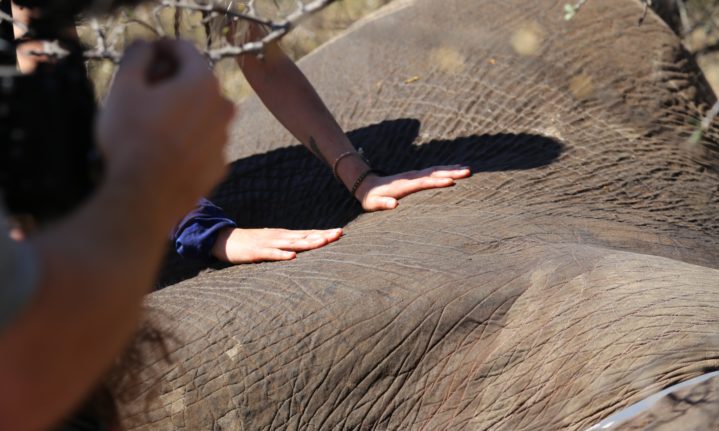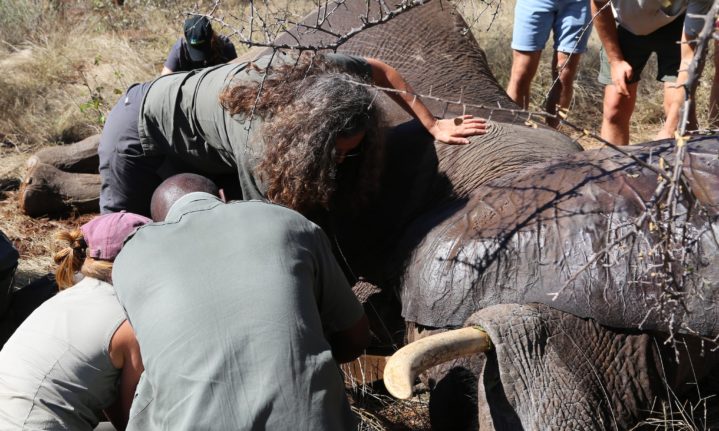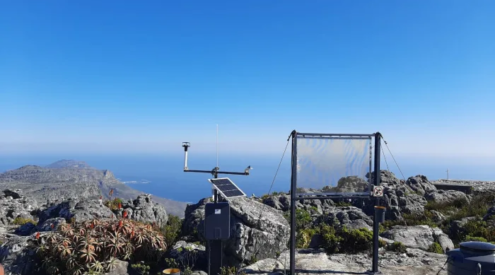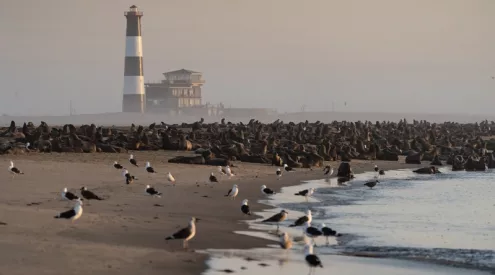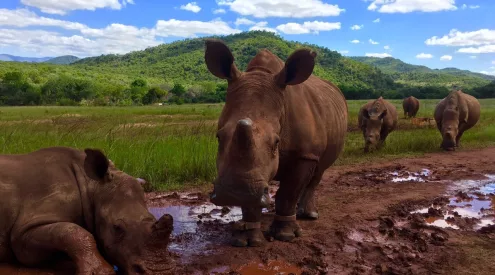With funding from the Blue Sky Society Trust, Elephants Alive was able to successfully recollar an elephant cow in Greater Kruger, which has been monitored by the organisation since 2005.
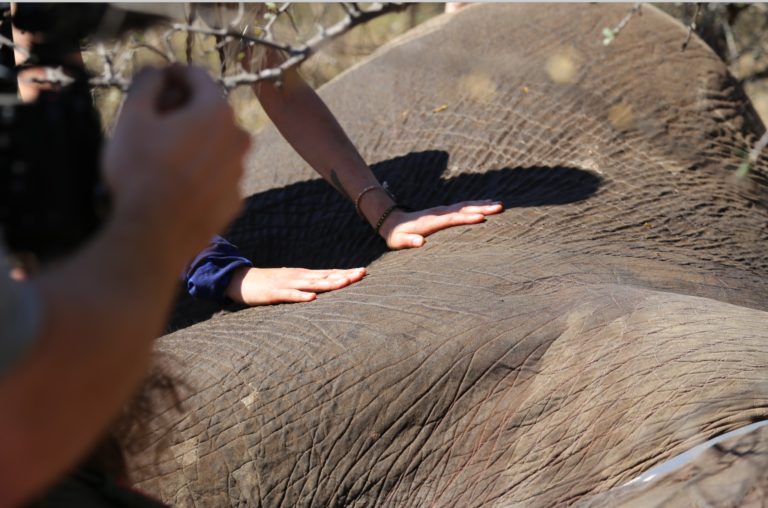
Elephant collarings require many hands. It takes at least two people to work on removing and replacing the collar, while other people need to take measurements and blood, faecal and milk samples. Photo: Lauren Dold
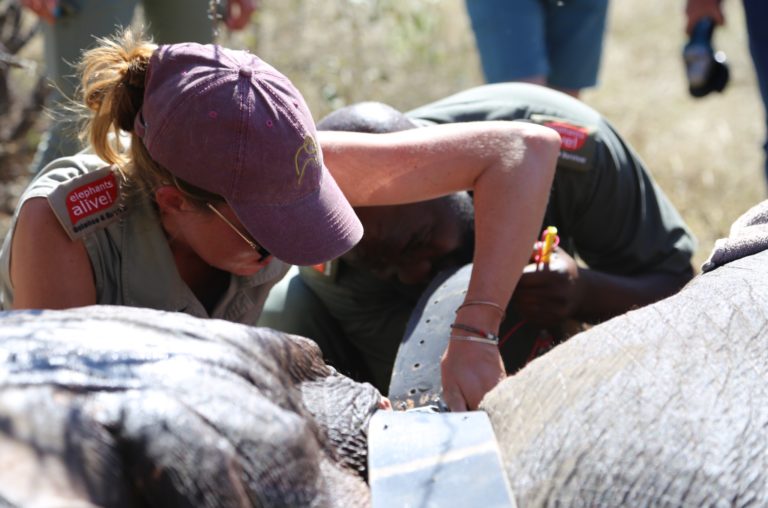
Collars have to be replaced every three to four years and costs upwards of R120 000 each time. Photo: Lauren Dold
The elephant cow, named Umbabat, was darted by wildlife vet Ben Muller, then quickly attended to by the Elephants Alive team on the ground, with assistance from the ladies on this year’s Rise of the Matriarch expedition with Blue Sky Society Trust.
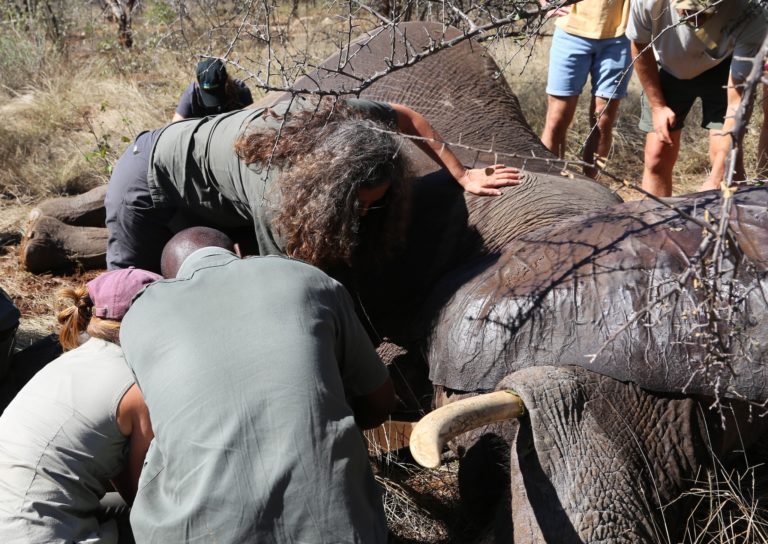
Water poured over Umbabat kept her cool during the process, while a dedicated person monitored her breathing throughout. Photo: Lauren Dold
While her collar was being replaced, Umbabat was measured and assessed by the vet team and was found to be in excellent condition. She was sedated for about 30 minutes, and was up on her feet and back with her herd within an hour.
Read: Roaming elephant bulls reach Kruger border after 700km journey
Elephants Alive collars elephants to monitor their movements, not only to understand their movement patterns and social behaviour, but also to keep them safe when they wander outside protected boundaries. To date, over 200 elephants have been collared across the Greater Kruger and surrounding areas, including transfrontier regions that span South Africa and Mozambique.
Take a look:
View this post on Instagram
Footage provided by Lauren Dold (Getaway) and Justin Sullivan
ALSO READ









